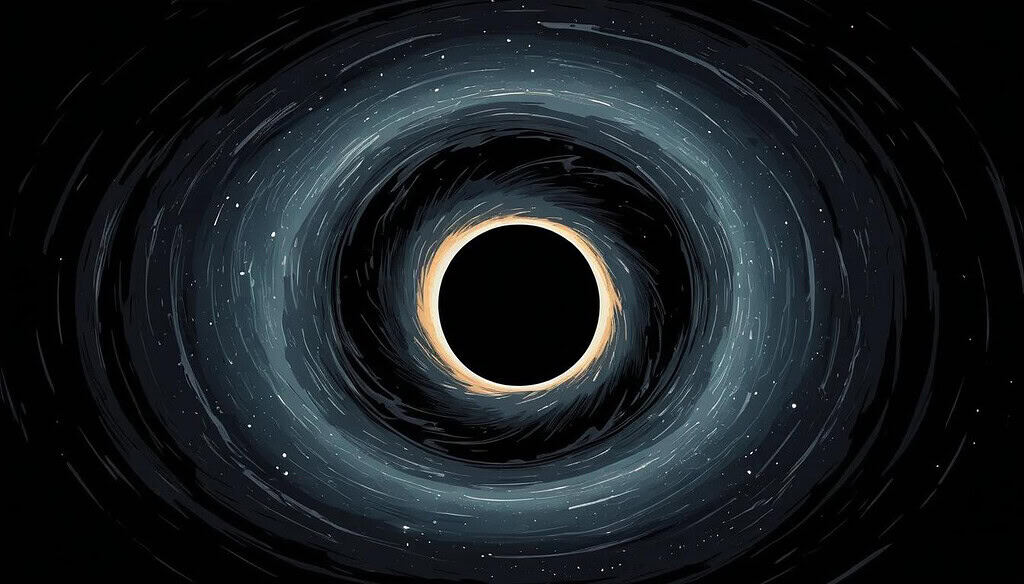Table of Contents
Birth of a Legend: Introducing the Black Hole’s Life
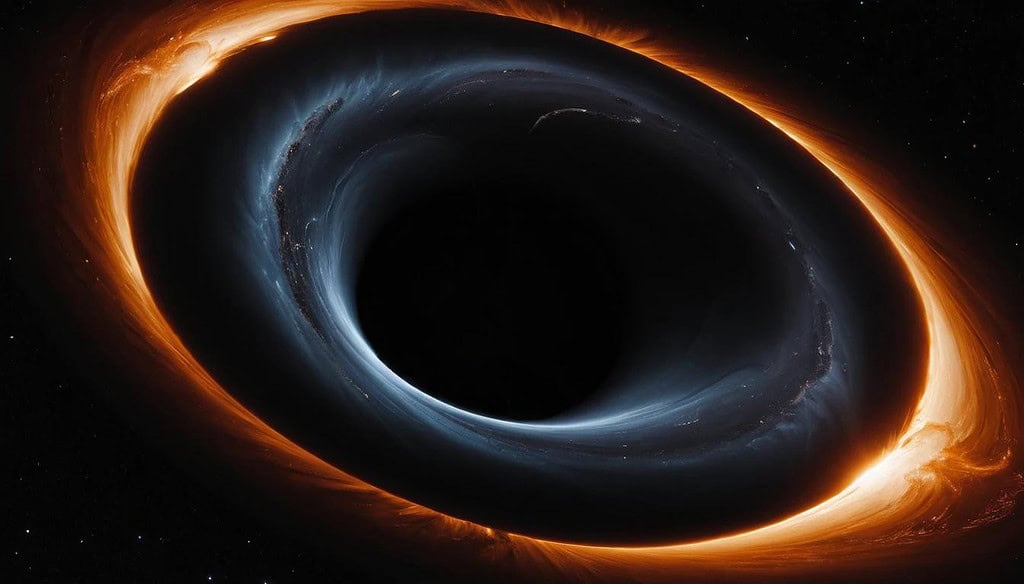
Have you ever thought about the universe having its own version of life stories? Among the endless mysteries floating out there, black holes take center stage as one of the most powerful forces of the Universe. These cosmic entities are like the superheroes—or maybe the anti-heroes—of the universe, capable of bending time, space, and even light to their will. Sounds dramatic, right? That’s because it is.
Now, what makes black holes so fascinating is how their existence mirrors our own lives in surprising ways. They aren’t just random voids sucking up everything in sight. Nope, they have a journey, a story, a life cycle that, oddly enough, feels very human. Think about it: they are born, they grow, they face challenges, they peak, and eventually, they fade. Their journey might span billions of years, but the pattern feels strangely familiar.
Picture the creation of a black hole—it’s the spectacular conclusion of a giant star’s existence. This tumultuous and fiery event leads to the emergence of something completely unique, akin to the instant we take our first breath. However, similar to newborns, black holes don’t begin as the voracious entities we often envision. They start off small and subtle, gradually absorbing from their surroundings.
And while we’re busy living our human lives, black holes are out there living their own, shaping galaxies, influencing the very fabric of the cosmos. Yet, despite their immense power, they are bound by laws, just like us. They have limits to what they can achieve, lessons to learn (in a cosmic sense), and legacies to leave behind.
So why compare them to us? Because black holes are a reminder of the universe’s interconnectedness. They show us that even in the vast expanse of space, there’s a relatable pattern—a beginning, a middle, and an end. Their story makes us feel a little closer to the cosmos, like we’re all part of this grand narrative together.
As we dive into their life stages, remember: black holes aren’t just cosmic oddities. They’re storytellers, revealing secrets about the universe and, perhaps, about ourselves.
8 Life Stages of a Black Hole: A Cosmic Reflection of Humanity
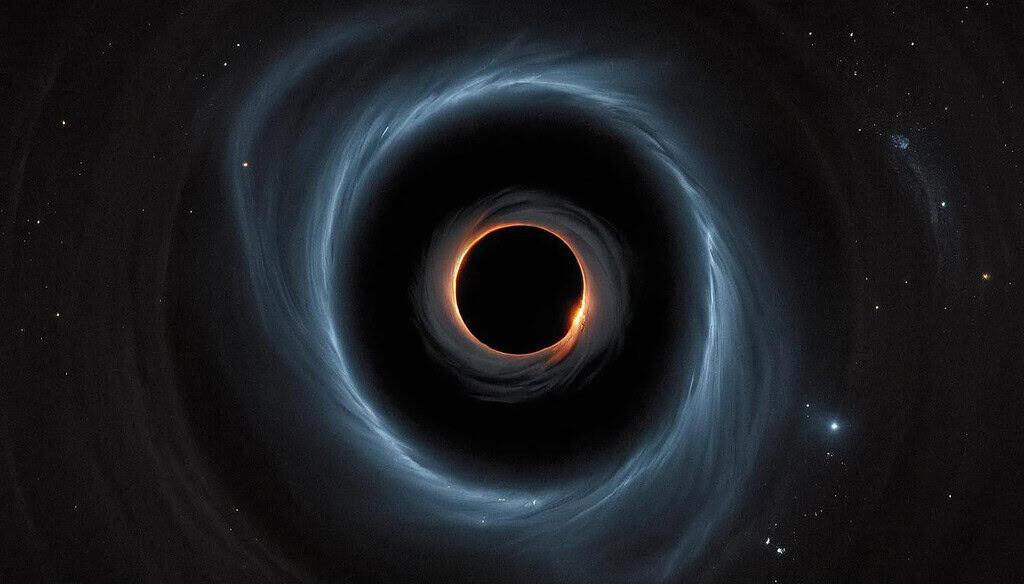
1. Birth: The Stellar Seed of a Black Hole
The birth of a black hole is nothing short of dramatic. Imagine a massive star, burning brightly, only to eventually collapse under its own weight. This collapse, triggered when the star runs out of fuel, marks the birth of a black hole—a moment that could be compared to the intense, dramatic entrance of a newborn into the world.
But unlike the warm, soft beginnings of a human baby, the birth of a black hole is catastrophic. The star implodes, creating an incredibly dense core with gravity so strong that not even light can escape. That’s where the term “black hole” comes from—an object in space so dense and massive that it creates a gravitational pull from which not even light can escape. This marks the black hole’s “infancy,” but it’s nothing like the quiet, peaceful beginnings of most newborns. It’s explosive, energetic, and packed with potential.
For a human, the birth of a baby represents the start of an incredible journey—full of learning, growth, and challenges. For a black hole, its birth signals the start of a process that will shape the universe around it. This is where its “life” begins, and it begins with a bang, much like a baby’s first cry.
The seed of the black hole may be small at first, but from this collapse, it has the potential to grow into something much larger and more influential, much like how a baby, though tiny at birth, will one day grow to influence the world.
2. Infancy: The Quiet Beginning
Just as a baby spends its first years quietly growing and observing the world around it, a black hole’s infancy is marked by subtle, gradual changes. After the birth, it isn’t yet the powerful, all-consuming entity we often picture. It starts off small, quietly pulling in matter from its surroundings. During this stage, it doesn’t exhibit the loud, dramatic behaviors that define later stages. Instead, it’s like a little sponge, slowly absorbing gas, dust, and other materials from its environment.
If you think of a human baby, they spend their infancy learning, observing, and slowly building the foundation for their future actions. A black hole, in its infancy, is similarly gathering the raw materials it will need to grow into something much larger. While its influence is still limited in its early days, it is steadily building the mass and density that will allow it to eventually become an unstoppable force.
For the black hole, this stage is foundational. It’s a quiet time, but one that lays the groundwork for the cosmic power it will eventually wield. Just like an infant, who may seem delicate and vulnerable in the early days, a black hole is slowly building its strength. It’s an exciting time for the universe, even if the changes are happening slowly and quietly. This is the calm before the storm, the quiet beginnings of something extraordinary.
3. Childhood: Growing Through Accretion
Now that the black hole has started to grow, we enter the childhood phase. This is where it starts to get a little more active. It’s no longer just sitting there; it’s starting to feed. This phase is called “accretion,” where it begins to pull in larger amounts of matter from its surroundings. Its gravitational pull becomes stronger, and its appetite grows larger. It begins to devour anything that comes too close: gas, dust, and even entire stars.
In human terms, this is like the phase where a child is learning and growing rapidly. They’re eating more, gaining strength, and getting bigger every day. Like a child who goes through a growth spurt, the black hole in its childhood is becoming more powerful, its size increasing dramatically as it continues to pull in matter from the environment.
Just as a child’s brain grows during this time, so does the black hole’s influence on its surroundings. The more it eats, the stronger its gravitational pull becomes, pulling even more objects in. This stage is marked by growth—rapid, sometimes overwhelming growth—that will set the stage for the its eventual dominance over its environment.
The black hole is still far from fully grown, but this stage marks an important milestone in its development. It’s a time of expansion and increase in power, setting the foundation for the next stages in its life.
4. Adolescence: The Quasar Phase
As the black hole continues to grow, it enters what can be compared to the teenage years. This is the “Quasar Phase,” when it reaches an exciting, chaotic period in its life. Just like a teenager going through rapid changes and bursts of energy, it becomes intensely active during this phase. It begins emitting large amounts of radiation as it pulls in massive amounts of gas and dust, and this energy creates a brilliant quasar—a shining, energetic display visible from across the universe.
During adolescence, humans often go through a phase of rebellion and high energy. Similarly, the black hole’s quasar phase is filled with energetic bursts and outbursts. It’s no longer a quiet, growing entity—it’s a powerful force, radiating intense energy and causing ripples in the fabric of space-time. This is a period of dramatic change for the black hole, just as adolescence is a time of intense growth and exploration for humans.
This phase is marked by the black hole’s ability to influence a vast region around it. The radiation produced by the quasar can be seen across enormous distances, making it one of the brightest objects in the universe. But just like the wild energy of a teenager, this period is often chaotic. As its influence expands, the surrounding space is forever changed by its existence. It’s a noisy, vibrant time—a time when the black hole is learning to harness its power and leave its mark on the universe.
5. Adulthood: The Steady Phase
Eventually, the black hole settles into a phase we can call “adulthood.” By this stage, it has gained enormous mass, and it’s no longer the chaotic, energetic force of its adolescence. Instead, it enters a period of stability, where it continues to consume matter but at a much more controlled pace. It’s no longer the unpredictable, fiery quasar; it becomes a steady, consistent force that continues to influence the galaxy around it.
In human terms, adulthood represents a time when a person has figured out who they are and how to balance their responsibilities. The black hole, having reached maturity, has learned to control its appetite and influence. It’s no longer creating massive bursts of energy, but it’s still a significant presence in its environment. Just like an adult who continues to contribute to society, a black hole in adulthood continues to shape its galaxy, though it does so more subtly.
This phase is defined by the black hole’s ability to maintain stability and balance. It doesn’t need to cause a scene or make a huge splash—it simply continues to exist, drawing in nearby objects and maintaining its place as one of the most powerful forces in its galaxy. This is a quiet, yet influential time for the black hole. It may not be as flashy as it was during adolescence, but its impact is still felt, just as adults continue to shape the world around them in subtle ways.
6. Middle Age: The Supermassive Status
As a black hole enters its middle age, it transforms into a supermassive entity. At this point, it has grown into a colossal force, exerting its influence over entire galaxies. Supermassive black holes are typically located at the centers of most large galaxies, including our Milky Way. Much like a person who thrives in their middle age—successful, influential, and captivating—the black hole during this phase is at the pinnacle of its power.
During middle age, the black hole has accumulated so much mass and energy that it becomes a central force in the galaxy. It’s the ruler, pulling in stars, gas, and other matter to fuel its enormous size. This stage is all about power and control. It has earned its place at the center of the galaxy, and it continues to grow, shaping the galaxy and even affecting the formation of stars and planets around it.
Much like a person in middle age who may be at the top of their career or family life, the black hole in its supermassive phase is the dominant figure in its environment. It’s the leader, the constant presence that holds everything together. Its influence is undeniable, and just like a middle-aged person who leaves a mark on the world, it leaves an indelible impact on its galaxy.
7. Old Age: The Quieting Giant
As the black hole enters its old age, its activity begins to slow down. Just like elderly humans who might not be as active as they once were, the black hole in this phase becomes less energetic. It’s no longer pulling in vast amounts of matter or emitting the bright quasar radiation it once did. Instead, it quietly exists, pulling in smaller objects and slowly growing.
In human terms, this is the time when people often slow down. They’ve had their fill of action and are now reflecting on the life they’ve led. Similarly, the black hole isn’t as flashy or dramatic in its old age. It’s still a massive force, but it’s no longer the dynamic powerhouse it once was. Its power has waned, and it now spends its time-consuming smaller amounts of matter and gradually fading into the background of its galaxy.
This phase is quieter and more contemplative. The black hole’s once-immense influence is now less noticeable, much like an elderly person who has passed the torch to the next generation. However, even in its old age, it still holds a certain kind of power, and its presence is still felt, even if it’s no longer the center of attention.
8. Death: The Evaporation or Transformation
The conclusion of a black hole’s existence mirrors the end of a human life in its inevitability and enigma. For certain black holes, this finale unfolds through a gradual process of evaporation. This phenomenon, referred to as Hawking radiation, takes place over billions or even trillions of years. During this phase, the black hole gradually sheds mass and energy, ultimately fading away into nothingness.
Alternatively, black holes can merge with other black holes, forming even larger supermassive black holes. This “death” might not be as dramatic as the black hole disappearing entirely, but it is still a transformation. In the end, the black hole is no longer the same entity it once was, having transformed into something even more massive.
For humans, death represents an end, but also a transformation. The energy and matter that make up our bodies continue to exist in other forms. Similarly, when a black hole dies, its mass and energy are either transformed or dispersed into the universe, leaving behind a legacy that continues to affect the cosmos long after its physical form has vanished.
Similar to the conclusion of a human life, the demise of a black hole signifies a profound transformation. While it may not occur as suddenly as one might expect, it still marks the end of a significant chapter, leaving behind a trail of questions and mysteries that will captivate scientists for many years ahead.
Lessons from the Cosmos: How Black Holes Mirror Our Existence
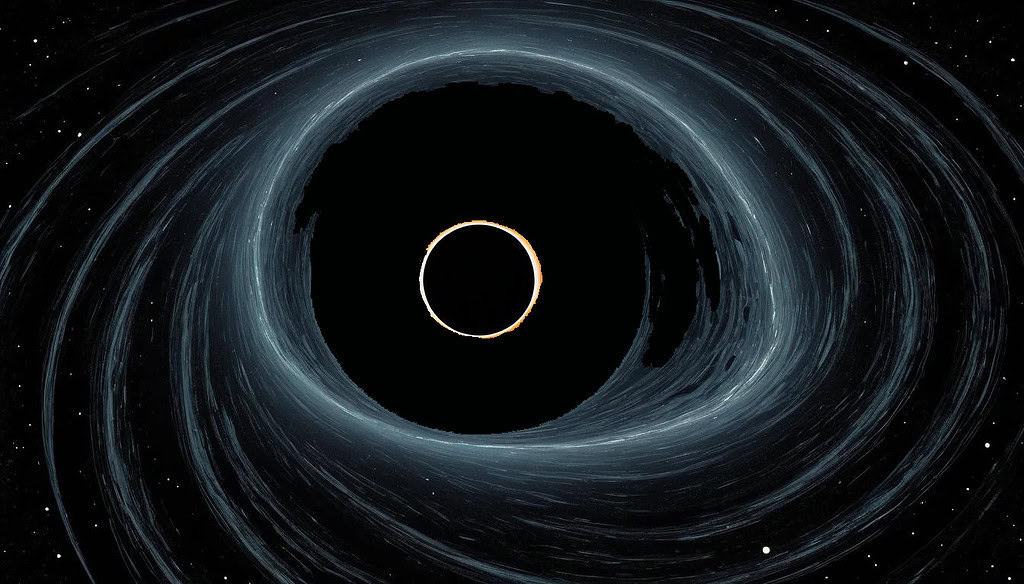
Let’s take a moment to appreciate the fact that the universe seems to have a sense of humor—or at least a knack for parallels. Black holes, for all their mind-bending complexity, seem to live a life that echoes our own. Their journey isn’t just a scientific phenomenon; it’s a cosmic metaphor for the human experience.
Think about the adolescent stage of a black hole, the quasar phase. It’s loud, chaotic, and demands attention—a perfect reflection of teenage years. Like an angsty teen blasting music and challenging the rules, black holes in this stage emit incredible energy, lighting up their surroundings with drama. Isn’t it wild how the universe finds a way to mimic our personal growth? Then there’s adulthood, where they settle into a steady routine. They’ve figured out how to balance their voracious appetite for matter and their influence over their environment. Sound familiar? It’s like when we finally find our footing, balancing careers, relationships, and responsibilities. But just like us, they don’t stay in their prime forever.
As they age, black holes become quieter, consuming less and leaving behind a subtle, steady influence. They remind us of the wisdom and quiet strength that come with old age. And when they reach the end of their life cycle, evaporating over an unfathomable stretch of time, they leave behind questions, mysteries, and a legacy, much like how we hope to leave an impact on those we care about.
The beauty of this comparison is how it makes something as incomprehensible as a black hole feel a bit more relatable. Sure, we might not warp spacetime or swallow stars, but we grow, change, and leave our mark, just like they do.
Black holes teach us that the universe isn’t just a random collection of objects and events. It’s a story, filled with characters—some grand, some small—all connected in ways we’re only beginning to understand. Maybe, just maybe, their story is telling us that we’re not so different after all.
Eternal Reflections: The Legacy of a Black Hole’s Life
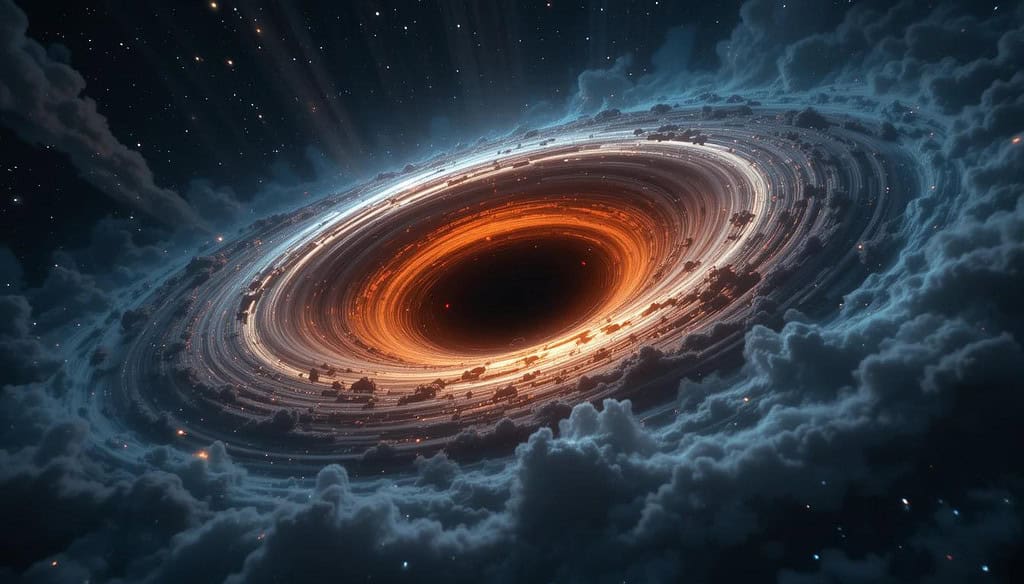
As we wrap up this cosmic journey, let’s take a moment to reflect on what black holes leave behind. Their lives might span billions of years, but the impact they have on the universe is immeasurable. They shape galaxies, influence star formation, and even stretch our understanding of physics. And isn’t that what we all want? To leave something meaningful behind?
Black Holes remind us that life—whether cosmic or human—is about transformation. They begin as something else entirely, born from the death of a star. They grow and evolve, sometimes wreaking havoc, sometimes bringing order, but always changing the environment around them. Sound familiar? It’s not so different from the way we influence the world, leaving our mark in big and small ways.
What’s particularly humbling is the black hole’s final act. Over trillions of years, they quietly evaporate, releasing energy back into the universe. It’s a reminder that nothing lasts forever, not even the most powerful forces. Yet, their legacy lives on—in the stars they helped form, the galaxies they shaped, and the mysteries they left us to solve. In comparing their story to ours, these cosmic entities offer a profound perspective. They show us that growth and change are universal truths. They remind us of the impermanence of even the mightiest things. But most importantly, they teach us that life—cosmic or human—is extraordinary, not because it lasts forever, but because of the impact it makes while it does.
So the next time you look up at the night sky, think about the black holes out there, quietly living their epic lives. They’re more than cosmic enigmas; they’re storytellers, sharing a tale of growth, transformation, and legacy that resonates deeply with our own. And in that, they remind us that we’re all part of the same extraordinary universe.
Disclaimers: *This article is only for informational purposes.
**Do not make your important decisions solely based on the information provided in this article. Do your own research.
***Information in this article may vary or get updated in the future.
Read More Science and Space Articles
- Supernova Treasures: 8 Heavenly Metals Shaping Jewelry
- 8 Remarkable Ways Kumquat Shines in Culture and Cuisine
- Big Bang: 8 Explosive Steps to Derive The Recipe of Cosmos
- 8 Amazing Lime Tales: Ancient Groves to Modern Kitchens
- 8 Weird Ways Grapefruit Can Interfere with Medications
- Pomelo in Culture: 8 Heartwarming Ritual Traditions
- 8 Culinary Uses of Oranges That I Highly Recommend
- 8 Astounding Ways Lemons Have Helped Elevate My Mood
- 8 Irresistible Ericaceae Fruits (Heath Family) to Savor and Enjoy
- 8 Incredible and Healthy Cucurbitaceae Fruits to Enjoy
- Top 8 Delicious Anacardiaceae Fruits You Must Try
- 8 Incredible Musaceae Fruits You Need to Try Right Now
- 8 Incredible Vitaceae Fruits: Nature’s Tasty Treasures
- 8 Incredible Rosaceae Fruits You Need to Discover
- Discover 8 Fruit Families That Enrich Our Daily Diets
- 8 Non-CO₂ Greenhouse Gasses That Are Worst Than CO₂
- 8 Ways Water Crisis is Worsened by Global Climate Change
- 8 Amazing Ways Brain Anatomy is Altered by New Learning

